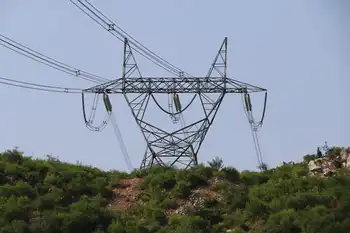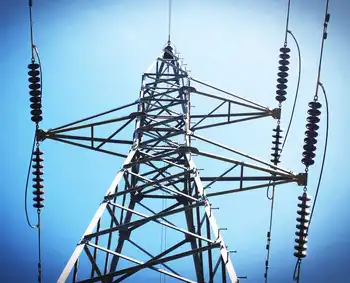An alternative to towers – underwater cable
- Generating 20 percent of AmericaÂ’s electricity with wind, as recent studies proposed, would require building up to 22,000 miles of new high-voltage transmission lines. But the huge towers and unsightly tree cutting that these projects require have provoked intense public opposition.
Recently, though, some companies are finding a remarkably simple answer to that political problem. They are putting power lines under water, in a string of projects that has so far provoked only token opposition from environmentalists and virtually no reaction from the larger public.
“The fish don’t vote,” said Edward M. Stern, president of PowerBridge, a company that built a 65-mile offshore cable from New Jersey to Long Island and is working on two more.
The projects have even drawn cautious enthusiasm from some environmental groups that say the new power lines serve their goal of getting the United States to use more renewable power.
“Environmentalists need to be open-minded to technology improvements, and looking at the big picture,” said Phillip Musegaas, program director for Riverkeeper, a New York environmental group focused on the Hudson River.
Mr. MusegaasÂ’s open-mindedness will soon be put to the test, because Transmission Developers, a Toronto company, is proposing to use the Hudson for the most ambitious underwater transmission project yet. Beginning north of the Canadian border, a 370-mile line would run along the bottom of Lake Champlain, down the bed of the Hudson all the way to New York City. It would continue under Long Island Sound to Connecticut.
The project sponsors have only recently begun seeking the numerous permits they need, but if built, it would be one of the longest submarine power cables in the world. It would bring hydroelectricity to the power-thirsty New York City market. It would also break a stalemate; New York has not had a major new overhead power line in 20 years.
If Transmission Developers succeeds with such an ambitious project, other transmission developers are likely to study the underwater strategy to figure out just how far they can take it. Would power lines crossing the Great Lakes make sense? Could underwater cables be used to move renewable power from the windy Great Plains to cities like Chicago?
The cost of putting a cable under water can be lower than burying cables on land, because workers can lay the cables from giant reels, allowing stretches of more than a mile with no splices. The strategy is limited, of course, by the availability of rivers and lakes — they do not go everywhere power developers would like to run new lines. In fact, many of the country’s rivers run north or south, whereas much of the country’s power must move east or west.
And underwater lines are still more expensive than lines on transmission towers. Mr. SternÂ’s 65-mile cable cost about $600 million, and a 53-mile cable under San Francisco Bay cost about $505 million. Much of the cost in each case is to transform the electricity to direct current, a form that is easier to use in buried cables. Standard lines hung on towers run from $1 million to $4 million a mile, depending on terrain and other factors. If more underwater lines are built, the higher costs would have a small impact on electric bills.
Still, the underwater approach solves some intractable problems. In San Francisco, for example, old power plants that burn natural gas are about to be retired because a new transmission company has succeeded in running a line 33 miles across the San Francisco Bay.
Mr. Stern said his companyÂ’s Neptune Cable, which runs from Sayreville, N.J., to Levittown, N.Y., on Long Island, now carries 22 percent of Long IslandÂ’s electricity. His company is trying to complete a deal for a cable that would run from Ridgefield, N.J., to a Consolidated Edison substation on West 49th Street in Manhattan.
Those two cables were not motivated primarily by environmental goals — they are meant to connect cheap generation to areas where power prices are high. Mr. Stern’s company, PowerBridge, is now considering two renewable energy projects, however. One cable would connect proposed wind farms on the Hawaiian islands of Molokai and Lanai to the urban center on Oahu, and another would bring wind power from Maine along the Atlantic coast to Boston.
Laying submarine cables can present some environmental problems, like stirring up industrial chemicals resting on the bottoms of lakes or rivers. The Champlain-Hudson cable would detour down a railroad right-of-way to avoid one particularly polluted stretch of the Hudson. And the cables must avoid spawning areas for some species of fish.
The New Jersey chapter of the Sierra Club opposed the cable that would cross the Hudson from northern New Jersey because, among other reasons, the club thought it would stimulate construction of traditional transmission lines farther west, to bring in power to make up for what was being exported to New York. And it does not like power from dams in Canada.
“Frankly, my dear, I don’t want a dam,” said Jeff Tittel, the chapter’s director.
But the opposition was unsuccessful. In some cases, power developers are trying to enlist support from environmental groups in the early stages of their underwater projects.
Nearly all the submarine cables use direct current, a form of transmission favored by Thomas Edison but mostly rejected in the late 1800s in favor of alternating current, the kind of electricity now used to run most appliances. But alternating-current lines are hard to bury, because an interaction between the current and the cable casing drives up voltage to unwanted levels.
Direct-current transmission is also undergoing a modest revival on land, because over long distances, its line losses are smaller, and flows are easier to control. Two recent proposals for a centrally planned overhaul of the North American electric grid called for heavy use of direct current.
New technology offered by two European companies, Siemens and ABB, has lowered the cost for some direct current projects, and shrunk the size of the terminals where alternating current is converted to direct current and back, a crucial consideration in urban projects.
Developers and power companies are recognizing that the expense of underwater lines may be worth it if it helps them overcome political opposition.
Donald G. Jessome, the president of Transmission Developers, the company that wants to build the Hudson project, said of overhead power lines, “If you can’t get them built, because the communities you want to serve don’t want them, then in our opinion they are infinitely expensive.”
Related News

Alberta creates fund to help communities hit by coal phase-out
EDMONTON - The Coal Community Transition Fund is open to municipalities and First Nations affected as Alberta phases out coal-fired electricity by 2030 to focus on renewables and natural gas.
Economic Development Minister Deron Bilous says the government wants to ensure these communities thrive through the transition
“Residents in our communities have concerns about the transition away from coal,” Rod Shaigec, mayor of Parkland County, said.
“They also have ideas on how we can mitigate the impacts on workers and diversify our economy to create new employment opportunities for affected workers. We are working to address those concerns and support their ideas. This…




